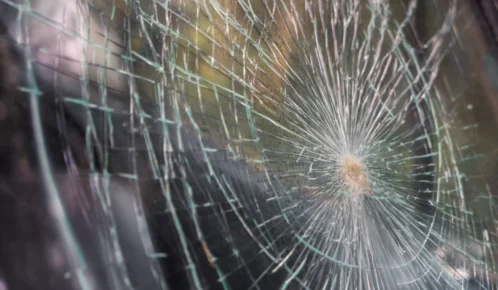In recent years, mold and so-called “toxic mold” has become the subject of mounting health concerns as well as numerous lawsuits brought by toxic mold personal injury lawyers. Because the scientific explanations of mold are both complex and technical, numerous misconceptions have crept into the popular perception of toxic mold and its dangers. These misconceptions only add to the widespread fear of mold at home, in schools, in the workplace, and elsewhere. In addition, coverage in the media and on many websites has often been misleading or inaccurate.
Table of Contents
Separating fact from fiction may help if you’ve discovered mold in your home or think you may be suffering from mold-related health problems.
What Is Mold, and Where Does It Grow?
Mold is a form of fungus that grows both indoors and outdoors and thrives in warm, damp, and humid environments. There are over a thousand different varieties of indoor mold, and the good news is that the presence of a moderate amount of mold in your home is generally not harmful to your health. Most health concerns related to mold exposure arise only when there is a build-up of high concentrations of mold.
Mold spreads by generating spores, and like so many nuisances in life, mold spores are able to survive for long periods even in harsh, dry environments in which mold itself could not grow — which is one of the things that makes mold so hard to eliminate. Mold spores are invisible to the eye and can become airborne — an important consideration during efforts to clean up and eliminate a mold infestation.
Where Is Mold Found?
Some amount of mold is more or less everywhere all the time. Its many forms are so common and it travels so easily that trying to make your home or any other building totally mold-free would be next to impossible. But high concentrations of mold — which might result from flooding, for example — can be cleaned up and eliminated for the most part (though such cleanup may in some cases prove costly and laborious).
Because mold thrives in warm, damp, and humid places, indoor mold is most commonly found in areas of high moisture and low ventilation, such as bathrooms and basements. It is also commonly found in and around leaks in roofs, pipes, windows, or where there has been flooding. Potted plants are also a common location for mold.
Because of its resilience, mold also grows in all sorts of common building materials. It thrives in wood and wood products, paper and paper products such as wallpaper, ceiling tiles, drywall, and cardboard. It grows in fabrics such as carpets and upholstery. It can also be found in other building products, including paint and insulation. It even likes dust.
How Mold Travels
Mold travels in all sorts of ways, including through open doors and windows and through air conditioning, heating, and ventilation systems. It can be carried indoors, on shoes and clothing, or brought inside by pets.
Detecting and Preventing Mold
You may detect mold by seeing it (usually in the form of spots of almost any color) or smelling its musty odor. Once mold can be detected either by sight or smell, it may have built up a high enough concentration to present a health hazard, and you should take steps to eliminate it (a procedure called “mold remediation”).
Because mold generally thrives in warm, damp, and humid environments, a helpful way of approaching mold prevention is to focus on moisture and ventilation. Keeping suspect areas of your home dry and well-ventilated will usually be enough to prevent the appearance of mold.
What Is “Toxic Mold”?
The term “toxic mold” is somewhat misleading and has led to misunderstandings and confusion regarding the health-related dangers of mold. In high enough concentrations, all molds — toxic or otherwise — may cause health problems. As a result, some sources refer to all mold as “toxic mold.”
Strictly speaking, however, there is no such thing as toxic mold. A few forms of mold are called “toxigenic,” meaning that under certain conditions they can produce small molecular toxins, called “mycotoxins.” These mycotoxins are usually spread by way of the mold’s spores and may be the cause of potentially serious health problems if ingested in sufficient quantities over time.
In contrast with mold in general, which is to be found virtually everywhere, toxigenic molds are less common. Two of the best-known examples of so-called “toxic mold” include:
Stachybotrys Chartarum
Sometimes called S. chartarum or Stachybotrys atra, and popularly known as “black mold,” this toxigenic mold is a greenish-black fungus that requires a moist environment in which to grow and is most commonly found in flood-damaged buildings. The mycotoxins produced by Stachybotrys chartarum are potent, but there is some evidence that only a few strains of Stachybotrys chartarum are toxigenic, indicating that this particular type of “toxic mold” may be quite rare.
Aspergillis
Aspergillis is a family of molds, and only some aspergillis molds are toxigenic. The mycotoxins produced by toxigenic strains of Aspergillis are less potent than stachybotrys chartarum mycotoxins, but infestations of Aspergillis mold are probably far more common. Aspergillis may be found in any of the mold-friendly environments discussed above.
Though some people become ill from these mycotoxins and toxigenic mold, many of the more common health problems thought to be potentially mold-related may be caused by mold that is not strictly speaking toxic (or toxigenic).
How to Get Rid of Mold
As noted above, there is always a little mold present in any building, and this does not generally pose a health risk to its occupants. Once a mold infestation has been detected, however, clean-up and removal of the mold (often referred to as “mold remediation”) is strongly recommended, regardless of whether the mold is toxigenic or not.
Hard Surfaces
Removal of mold from hard surfaces can normally be achieved by using special cleaning methods or “protocols” developed specifically for eliminating mold. It is very important to strictly follow such cleaning protocols because of the danger of mold spores being released and spreading invisibly during cleanup.
Porous Surfaces
Where mold has infested porous or absorbent surfaces, however, usually the only viable solution is removal and replacement of the material that has been infested. This includes everything from rugs to drywall, wallpaper to ceiling tiles. Where mold has penetrated behind walls and inside building materials, extensive renovations may be required.
Needless to say, mold remediation can be a costly and labor-intensive project. Care must be taken not to allow the release of mold spores during mold remediation; otherwise, the mold is likely to return. It is especially important to prevent mold spores from entering a building’s ventilation system, through which the spores can quickly and easily spread throughout the building. Depending on the extent and location of the mold infestation, it may be advisable to hire professional mold remediators.
If you’ve sustained damages resulting from a mold outbreak, call a toxic mold lawyer at Ankin Law. We can help you pursue a lawsuit to recover expenses resulting from exposure and mold infestation.



